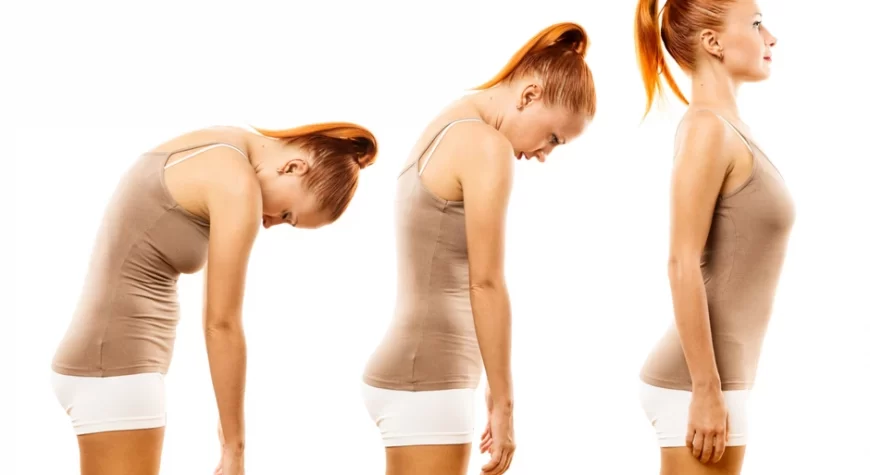Why you should not be sitting straight? Always…

When you complain of back or neck pain in front of your dear ones, without fail each one will ask you to correct your posture. While many doctors, clinicians, websites/ social media handles swear that bad posture -slumping, leaning forwards or standing with a protruding belly, can be a cause of neck pain, back pain, breathlessness, varicose veins, indigestion, and the list goes on, but no evidence or study confirms this. Interestingly our ancestors have always defined good posture as – head straight and chin up!
Even today good posture is always explained as being straight. Even a world-renowned Cleaveland Clinic defines posture as the position in which you hold your body upright against gravity while standing still or lying down. But, posture is not a mere position, it is a dynamic pattern of reflexes, adaptive responses and habits to anything which makes you less functional or less upright like gravity, avoidable awkward working conditions or changes related to any sport or high demand physical activity. Sitting/standing straight is more of a cultural belief rather than a scientific one, right from childhood we have been told to sit straight and how we have to hold the perfect posture. With time we have extended our belief system of a good posture from being straight to the health benefits attached to it.
A person’s posture offers insights into their emotions, thoughts, and body image. Some postures can be protective strategies and may reflect concerns regarding body vulnerability. Posture can be submissive or dominant, happy or sad, brave or fearful, apathetic or uptight!
So the real question that lies- is there such a thing as good posture?
There is no scientifically agreed definition of what constitutes a good or bad posture. A study of 295 physiotherapists in four European countries asked them to pick their perfect posture from pictures of nine options ranging from slumped to upright. While 85% chose one of two postures, these were very different, with one having less lumbar curve than the others and a more erect upper back. The researchers concluded both postures would need higher levels of muscle activity and could cause greater tiredness and discomfort. The other favorite had a more lumbar curve, but the researchers said there was no evidence it would reduce the risk of back pain. Different postures suit different people – women, for example, tend to have a larger hollow in their lower back.
What is the correlation between pain and poor posture?
You might have come across several people who have nice upright posture but in terrible pain, on the other hand, people with lousy postures have no pain. This suggests that posture is just one of the hypothetical factors which can contribute to pain, but in most cases, they don’t contribute to pain.
Pain in poor posture can be explained through a vulnerability or stress in an awkward posture which can be avoided e.g, trying to sleep where it’s impossible to do so without putting your neck in an awkward position. Another plausible reason for pain is weak postural muscles- also called anti-gravity muscles as these muscles work tirelessly to keep you straight. When your postural muscles are weak and you sit slouched and hunched over, chances are high the muscle of your core (abdominals and back muscles), neck, ankle, knees, hips, and shoulder don’t provide you with enough support. It is easier for you to dump into your structure to rely on your joints and bones for support, instead of your muscles.
This is further complicated with overriding our comfortable postures as we are using muscles and asking them to do more than they naturally can and eventually muscles get fatigued and become sensitive, these sensitive spots in muscles are known as muscle “knots” or trigger points. These trigger points are the cause of pain in the long run.
Similarly, when we stand we tend to shift our weight from one side to another where it is most comfortable. But if we forced ourselves to stand straight it won’t last long till we start experiencing pain and tension in our legs and back.
Does that mean posture has no role in musculoskeletal pain?
Posture plays a very minuscule role in terms of pain, to date, none of the researches has shown any significant relationship between any postural factors, like shape and curves of the back and asymmetries and even the way we use our spine in sitting, standing or bending, to that of developing back pain. Also, there is no relationship between sitting and developing back pain.
So, rather than worrying about posture we should be focusing on General physical activity or general health. These days we are arguing about how technology is ruining our posture and causing slouching, neck pain, etc. fancy terms like “text neck” or off late “postural horns” have been in the news for wrong reasons. But, even in the past people used to bend their necks to read newspapers or books. The only difference is they used to be physically more active and mobile.
To understand it further, it is as if you have clenched your fist all day and then wonder at the end of the day why you’ve got a sore forearm! Similarly, if the muscles of the neck or back get strained from being in a constant position then would moving a bit more throughout the day and breaking up the time in any given position mitigate that? On top of that if your neck muscles got stronger over time then they would be able to tolerate more time with your head forward.
Then why do I have pain?
A sedentary lifestyle is not healthy for the body and the same rule applies to your spine, there is evidence suggesting that lower physical activity can lead to a lower pain threshold that means you need less stimulus to feel pain.
Similarly, poor sleep and stress are supposed to have a strong role in causing inflammation in your body.
Also, beliefs about posture can cause back pain, in one of the studies of school kids with low back pain and its correlation with heavier bags it was found out that, kids who had back pain didn’t carry heavy bags but if a child or their mother thinks their backpack is too heavy then they will complain of pain. Misinformation about posture keeps reinforcing the idea that our body is sensitive and doesn’t have the resilience to withstand loads of external load.
Summary to avoid pain while sitting
-
If you have back and neck pain, sitting for a prolonged period can aggravate your symptoms. That doesn’t mean the pain is because of the wrong posture.
-
A person who is rigid and upright and is complaining of pain may well benefit from slouching and relaxing back in their chair, and as a result, reducing the over-activity of their spinal muscles. Both should be encouraged- take regular breaks and move more.
-
Sit in a comfortable posture with low levels of muscle activity around your spine and trunk i.e. don’t tense your core during sitting. Move often. This means changing postures while in your chair.
-
Don’t be afraid to slouch for a while and relax those muscles if this feels good. Also, be active in the workplace. Get out of the chair, move from sitting to standing to walking, etc. The more movement, the better.
-
A person who slouches all day and complains of pain should be encouraged to try changing their pelvic posture to sit in a more upright and more neutral posture, particularly if this reduces their pain.
-
Consider other things that are more likely to be contributing to your neck and back pain in the office than simply posture. These include poor sleep patterns, stress, unhealthy lifestyle, lack of regular physical activity, and also your beliefs about neck and back pain.
If you’re having trouble overcoming your pain, seek the help of a trained clinician who uses an evidence-based approach.
